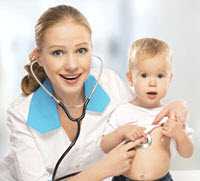Assisted Reproductive Technology Surveillance System
Overview
 Safe motherhood begins before conception with proper nutrition and a healthy lifestyle and continues with appropriate prenatal care and the prevention and treatment of complications when possible. The ideal result is a full-term pregnancy without unnecessary interventions, the delivery of a healthy infant, and a healthy postpartum period in a positive environment that supports the physical and emotional needs of the woman, infant, and family. CDC provides technical assistance, consultation, and training worldwide to help others identify and address male and female reproductive issues, maternal health, and infant health issues. To better understand the burden of maternal complications and mortality and to decrease disparities among populations at risk of death and complications from pregnancy, CDC supports national and state-based surveillance systems to monitor trends and investigate health issues. CDC also conducts epidemiologic, behavioral, demographic, and health services research, and works with partners to translate research findings into health care practice, public health policy, and health promotion strategies.
Safe motherhood begins before conception with proper nutrition and a healthy lifestyle and continues with appropriate prenatal care and the prevention and treatment of complications when possible. The ideal result is a full-term pregnancy without unnecessary interventions, the delivery of a healthy infant, and a healthy postpartum period in a positive environment that supports the physical and emotional needs of the woman, infant, and family. CDC provides technical assistance, consultation, and training worldwide to help others identify and address male and female reproductive issues, maternal health, and infant health issues. To better understand the burden of maternal complications and mortality and to decrease disparities among populations at risk of death and complications from pregnancy, CDC supports national and state-based surveillance systems to monitor trends and investigate health issues. CDC also conducts epidemiologic, behavioral, demographic, and health services research, and works with partners to translate research findings into health care practice, public health policy, and health promotion strategies.
Goals
Improve women's reproductive health from menarche through menopause.
Improve pregnancy health and care.
Improve fetal, newborn, and infant health.
 Priority Areas and Health Outcome Goals
Priority Areas and Health Outcome Goals
Within each of the three main priority areas, the outcome goals further define how we will measure the outcomes and effects from our work.
Women's Reproductive Health
Improve women’s health from menarche through menopause.
- Increase the percentage of pregnancies that are intended.
- Increase the proportion of women of reproductive age who practice key preventive health behaviors.
- Integrate selected reproductive and non-reproductive health services.
Pregnancy Health
Improve pregnancy health and care.
- Increase screening, prevention, and treatment for infections and chronic conditions before, during, and after pregnancy.
- Increase the proportion of women who practice behaviors that foster healthy pregnancies.
- Increase the number of countries and US states that use effective surveillance systems to monitor and review maternal deaths.
Infant Health
Improve pregnancy health and care.
- Increase screening, prevention, and treatment for infections and chronic conditions before, during, and after pregnancy.
- Increase the proportion of women who practice behaviors that foster healthy pregnancies.
- Increase the number of countries and US states that use effective surveillance systems to monitor and review maternal deaths.
In the United States and worldwide, assisted reproductive technology (ART) is increasingly used to overcome different types of infertility disorders. More than 60,000 infants were born from ART treatments in 2009, representing slightly more than 1% of the U.S. birth cohort. Assisted reproductive technology is associated with a substantial risk for a multiple birth delivery. Multiple birth is associated with poor infant and maternal health outcomes, including pregnancy complications, preterm delivery, low birth weight, congenital malformations, and infant death. As more women seek medical assistance to overcome their infertility it becomes important to ensure the safety of medical technology used and to continue research into the causes and prevention of infertility. The ART team works to achieve its goals through surveillance and epidemiologic research; training, technical assistance, consultation and collaboration with partners; the development of definitions, and standards; and informing public policy.
Future Directions
CDC’s Division of Reproductive Health will explore mechanisms to better assess the potential for short-and long-term health effects associated with ART women, infants, and families. In 2001, CDC began a collaborative project with the Massachusetts Department of Public Health to explore the possibility of linking ART data with birth certificate. The main objective was to—
- create a population-based dataset of ART mother-infant pairs with information on both conception and delivery, and
- compare this with similar data from other mother-infant pairs in the general birth population.
This project strengthens our capacity to evaluate maternal and infant outcomes of ART. The results of the project indicate that systematic assessment of certain adverse outcomes is feasible through linkage of the ART data with existing vital statistics and health care information systems.
To develop surveillance data on maternal and infant health outcomes after ART, we are exploring the possibility of expanding the linkage process to more data sources (e.g., hospital discharge data, birth defects and cancer registries). In 2008, we expanded the data linkage project to include two additional states (Florida, Michigan). We have completed linkage of ART data with state birth certificate records for each of the three states. We envision establishing a collaborative network of 5–10 states where use of ART is common and where the state’s vital statistics records allow linkages. Such a network would be a first and important step toward developing a national surveillance system of ART maternal and infant health outcomes.
- Page last reviewed: January 21, 2015
- Page last updated: January 21, 2015
- Content source:


 ShareCompartir
ShareCompartir